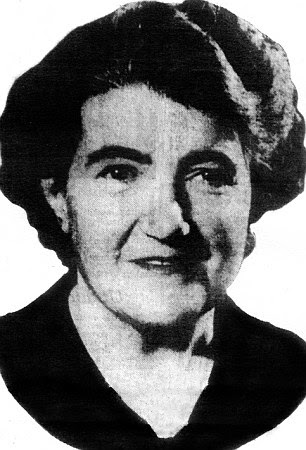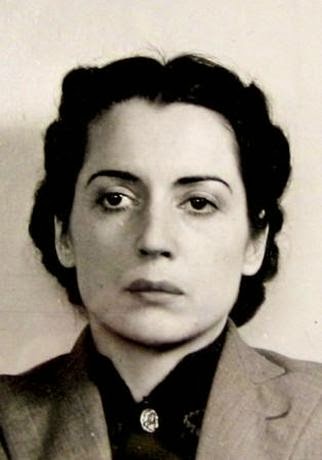During World War II, several individuals were charged under the Treachery Act. The vast majority of them were found guilty and executed. A few escaped with their lives.
Remember that during the House of Commons discussion on May 22, 1940, the Members of Parliament were told that the Treachery Act would only be applied in serious and grave cases of espionage and sabotage. They were also reassured that the death penalty was not necessarily a given as offenders could be charged jointly under the Treachery Act and the Defence Regulations (2A & 2B).
The First Four Spies
In early September 1940, four spies landed from two rowboats along the Kent coast. All four were quickly captured, imprisoned and eventually charged under the Treachery Act. They were tried in a civilian court in late November 1940. Their circumstances were all slightly different.
Jose Waldberg (German) had managed to set up his transmitter on the beach and actually sent a message back to Germany. He was found guilty and sentenced to death by hanging.
Karl Meier (Dutch) and Charles Van der Kieboom (Dutch) both hid their transmitter gear but did nothing else. Both were found guilty and sentenced to death by hanging.
Sjoerd Pons (Dutch) did not hide his gear. He claimed at his trial that the Gestapo had threatened to harm his father if he did not take on the mission. The jury acquitted Sjord. He was interned for the duration of the war under Defence Regulation 18B.
The Housewife from the Isle of Wight

Dorothy O’Grady (British) was a housewife on the Isle of Wight whose husband was training firefighters in London. In the fall of 1940, Dorothy trespassed on various Wight beaches so her dog could swim the ocean. She was also found to have sketched the coastline and suspected of cutting telegraph wires. She was charged under the Treachery Act and the Defence Regulations (2A & 2B). Although she had made no contact with the Germans, nor had any means to do so (i.e. radio transmitter or secret ink), the civil court found her guilty and sentenced her to death. He lawyer appealed the verdict and in February 1941, the Treachery Act conviction was overturned and Dorothy was sentenced to 14 years in prison under the Defence Regulations.
She later claimed that it was all a big game and that she was pretending to be a spy. One researcher has suggested Dorothy had mental health problems.
The First Briton Executed
George Johnson Armstrong (British) was a marine engineer who, in 1940, wrote a letter to the German Consul in Boston, offering to help the Germans. He was arrested in Boston and deported to England where he was charged under the Treachery Act. George was found guilty in May 1941 and sentenced to death by hanging.
Port Gordon Spies

In late September, three spies disembarked from a German flying boat off the coast of Scotland and rowed ashore in a dinghy. Robert Petter (alias Werner Waelti – German), Vera Erikson (various aliases – Danish?) and Karl Druecke (alais Francois de Deeker – German) were to have cycled to London but their bikes had been swept overboard in the choppy seas. Vera and Karl walked to Port Gordon to catch a train where they were quickly apprehended. Robert walked to Buckie and managed to catch a train to Edinburgh, where he was promptly arrested. Robert and Karl were charged under the Treachery Act, found guilty at their civil trial in mid June 1941 and hanged.
Vera, for some mysterious reason, was not charged. She spent the remainder of the war in prison and then disappeared.
British Fascists
Norah Briscoe and Gertrude Hiscox (both British) were enamoured with Nazi Germany. They joined a group of far right facist extremists in Britain. Norah worked in the Ministry of Supply and, in early 1941, stole sensitive documents which she showed to her landlady, Gertrude. A meeting was set up with a supposed German spy in what was actually an MI5 sting operation. Both women were arrested and charged under the Treachery Act and the Defence Regulations (2A & 2B). At their civil trial in mid June 1941, the prosecution inexplicably withdrew the Treachery Act charges. The lawyer for the two women convinced the court that they were deluded and deranged. They were sentenced to five years imprisonment under the Defence Regulations.
The Man who Fought
Karel Richter was a Sudeten German who landed near London Colney in May 1941. He hid his equipment, but did nothing else and was arrested a few days later. He was charged under the Treachery Act, found guilty and hanged in December 1941, after a struggle with Albert Pierrepoint, the executioner.
Briton on the Rock
Jose E. Keys was a British subject from Gibralter. He had planned to report to the Germans on Allied shipping movements. He was charged under the Treachery Act and found guilty in May 1942. He was hanged.
Secret Writer
Alphons L.E. Timmerman (Belgian) was trying to enter the United Kingdom as a Belgian refugee when he was found to have secret writing ingredients on his person: an envelope containing white powder, a bunch of orange sticks and a piece of cotton wool. He was charged under the Treachery Act and found guilty in May 1942. He was hanged.

(from Wikipedia)
Blackmailed
Duncan A.C. Scott-Ford (British) was a Merchant Navy seaman who was blackmailed into reporting on shipping movements for the Germans. He was charged under the Treachery Act and found guilty in October 1942. He was hanged.
A Refugee from Nazism
Johannes M. Dronkers (Dutch) and two Dutch refugees landed in England from a small yacht in May 1941. While the other two could give convincing refugee stories, Dronkers was so hysterical, nothing he said made sense. He was charged under the Treachery Act and found guilt in mid December 1942. He was hanged.
Another Refugee
Franciscus J. Winter (Belgian) arrived in England as a supposed refugee in July 1942. His story was not believed and he eventually admitted that the German Secret Service had asked him to spy on convoys and send information back to an address in a neutral country. He was charged under the Treachery Act and found guilty in December 1942. He was hanged.
Portuguese Mystery
Rogerio de Magalhaes Peixto de Menezes (Portuguese) was charged under the Treachery Act, found guilty and sentenced to death in March 1943. His sentence was commuted to penal servitude for life. Then, through an act of Cabinet, he was reprieved and eventually deported to Portugal. His trial files are closed until 2025.
Secret Letters Sent
Oswald John Job (British) had been interned in France under the Germans. He escaped (was released?) and made his way to England. Soon, Postal Censorship noticed strange letters going to Oswald’s former internment camp in France. He was visited by investigators who found secret ink & ciphers in his possession. He claimed that he took on the mission in order to escape the internment camp. Oswald was charged under the Treachery Act and found guilty in March 1944. He was hanged.
Eye on Shipping
Pierre R.C. Neukermans (Belgian) was a refugee who arrived in Britain in 1943. Several months later, when confronted by investigators, he admitted that he had reported on convoy shipping to the Germans. He was charged under the Treachery Act and found guilty in June 1944. He was hanged.
Eye on Aerodromes
Joseph J. Van Hove (Belgian) had spied on French and Belgian workers employed by the Germans. He was sent to England by the Germans in February 1944. He was immediately arrested and charged under the Treachery Act and found guilty in July 1944. He was hanged.
Traitorous Soldier
Private Theodore J.W. Schurch (British) was court martialed in January 1946. He had apparently reported information to the Germans while stationed in northern Africa in 1942 and 1943. Theodore was charged under the Treachery Act and found guilty. He was hanged.
Conclusion
In total, 16 people were executed under the Treachery Act (including Josef Jakobs – whose case will be discussed in the next post). Were their offences of a grave and serious nature? Clearly the Prosecutor’s office thought so. Four women managed to escape with their lives, three of them because they were charged jointly under the Defence Regulations and the Treachery Act and one (Vera Erikson) for mysterious reasons. The crime of some of these people were that they arrived in Britain via irregular means (parachute or boat) equipped with spy gear. Despite the fact that they had had no opportunity to spy, they were sentenced to death. It all came down to their “intent”. As some of the MPs in the House of Commons had noted, determing “intent” was a slippery slope. Sixteen people slid down that slope. Interestingly, an even greater number of potential spies and saboteurs were simply interned for the remainder of the war. Why were these sixteen charged and executed and so many others were not? A very good question to which there does not seem to be a good answer. Political expediency? Protecting the Double-Cross system?
Next up – a look at Josef Jakobs and how he was charged under the Treachery Act.
References
Stephen Stratford website (N.B. 2021 – Stephen’s site is no longer online.)
Wikipedia
National Archives – files on various spies
